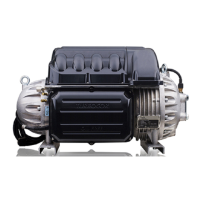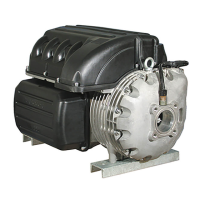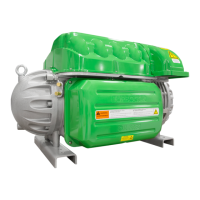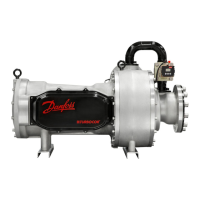21 of 114M-AP-001-EN Rev. Q
Chapter 3.0 Functional Description
Compressor operation begins with a call for cooling from a chiller controller. The compressor controller
then begins compressor ramp-up.
3.1 Main Fluid Path
The following paragraphs describe the flow of refrigerant from the intake to the discharge port of
the compressor (refer to see "Figure 3-1 Compressor Fluid Path TGS230/TTS300" and "Figure 3-2
Compressor Fluid Path (TGS310, TTS350, TGS390, TGS490, TTS400, TGS520, and TTS700)".
The refrigerant enters the suction side of the compressor as a low-pressure, low-temperature, super-
heated gas. The refrigerant gas passes through a set of adjustable Inlet Guide Vanes (IGVs) that are
used to control the compressor capacity at low-load conditions. The first compression element the gas
encounters is the first-stage impeller. The centrifugal force produced by the rotating impeller results
in an increase in both gas velocity and pressure. The high-velocity gas discharging from the impeller
is directed to the second-stage impeller through de-swirl vanes. The gas is further compressed by the
second-stage impeller and then discharged through a volute via a diffuser (a volute is a curved funnel
increasing in area to the discharge port; as the area of the cross-section increases, the volute reduces
the speed of the gas and increases its pressure). From there, the high-pressure/high-temperature gas
exits the compressor at the discharge port.
Figure 3-1 Compressor Fluid Path TGS230/TTS300
Discharge Port
Volute
Assembly
1st Stage
Impeller
Low - Pressure / Low -
Temperature Gas
Inlet Guide Vanes
(IGV)
Vaned
Diffuser
2nd Stage Impeller
High - Pressure / High -
Temperature Gas
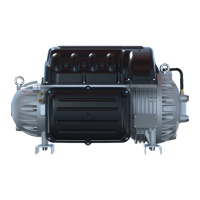
